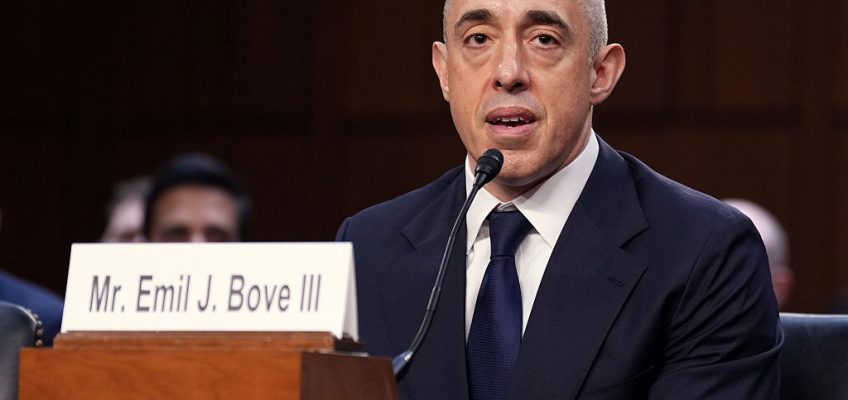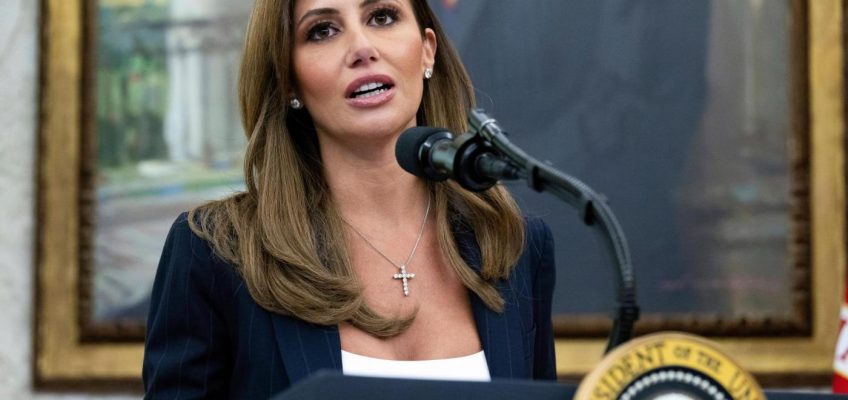By MARY CLARE JALONICK
WASHINGTON (AP) — The Senate narrowly voted on Tuesday to begin considering the nomination of former Trump lawyer Emil Bove for a lifetime appointment as a federal appeals court judge, with at least one Republican opposed and Democrats vowing to try to slow his confirmation.
Related Articles
Pam Bondi says judge-picked New Jersey prosecutor succeeding Alina Habba has been removed
What’s happening with forgiveness for student loans on income-based repayment plans?
Trump rehashes years-old grievances on Russia investigation after new intelligence report
Volunteers flock to immigration courts to support migrants arrested in the hallways
Thousands of Afghans face possible deportation after court refuses to extend their legal protection
Bove, a former criminal defense lawyer for President Donald Trump, is now a top official at the Justice Department. His nomination for the 3rd U.S. Circuit Court of Appeals has come under intense scrutiny from Democrats after a fired department lawyer said he suggested the Trump administration may need to ignore judicial commands — a claim Bove denies.
He was at the forefront of the department’s dismissed corruption case against New York City Mayor Eric Adams. He has also accused FBI officials of “insubordination” for refusing to hand over the names of agents who investigated the 2021 attack on the U.S. Capitol and ordered the firings of a group of prosecutors involved in those Jan. 6 criminal cases.
The 50-48 vote came after Democrats forced an additional procedural vote on his nomination, an effort to protest the nomination and delay the process. Senate Democratic Leader Chuck Schumer called Bove “the extreme of the extreme of the extreme” and “Trump’s worst judicial nominee to date.”
“Mr. Bove’s entire career has been built on one thing: fealty to Donald Trump,” Schumer said.
NEW YORK, NEW YORK – MAY 21: Former U.S. President Donald Trump appears in court with attorney Emil Bove (L) during his trial for allegedly covering up hush money payments at Manhattan Criminal Court on May 21, 2024 in New York City. Former U.S. President Donald Trump faces 34 felony counts of falsifying business records in the first of his criminal cases to go to trial. (Photo by Dave Sanders-Pool/Getty Images)
Alaska Sen. Lisa Murkowski was the only Republican to vote against moving to consider the nomination, signaling that Republicans will have the votes to confirm Bove by the end of the week. Sen. Susan Collins, R-Maine, voted to move forward but has not said whether she will support Bove’s confirmation.
The tension and delays over Bove’s nomination come as Republicans have tried to move Trump’s nominees as quickly as possible and as Trump has pushed Senate Majority Leader John Thune to skip the traditional August recess to stay in session and confirm more judges and executive branch officials. Thune said he is considering doing that if Democrats continue to force delays, and Democrats have shown little signs of letting up.
At his confirmation hearing earlier this month, Bove took criticism of his tenure head-on, telling lawmakers he understands some of his decisions “have generated controversy.” But Bove said he has been inaccurately portrayed as Trump’s “henchman” and “enforcer” at the department.
“I am someone who tries to stand up for what I believe is right,” Bove said.
Illinois Sen. Dick Durbin, the top Democrat on the panel, said Bove has used his position “to weaponize the Department of Justice against the president’s enemies.”
Senate Judiciary Committee Chairman Chuck Grassley, R-Iowa, defended Bove against the whistleblower’s claims and said he deserves fair treatment. He said Democrats withheld the complaint from the fired lawyer and that his staff had investigated the claims.
“Mr. Bove has a strong legal background and has served his country honorably,” Grassley said at a Senate Judiciary meeting last week, where Democrats walked out in protest.
The whistleblower complaint came from a former Justice Department lawyer who was fired in April after conceding in court that Kilmar Abrego Garcia, a Salvadoran man who had been living in Maryland, was mistakenly deported to an El Salvador prison.
That lawyer, Erez Reuveni, described efforts by top Justice Department officials in the weeks before his firing to stonewall and mislead judges to carry out deportations championed by the White House.
Reuveni described a Justice Department meeting in March concerning Trump’s plans to invoke the Alien Enemies Act over what the president claimed was an invasion by the Venezuelan gang Tren de Aragua. Reuveni said Bove raised the possibility that a court might block the deportations before they could happen. Reuveni claims Bove used a profanity in saying the department would need to consider telling the courts what to do and “ignore any such order,” Reuveni’s lawyers said in the filing.
Bove said he has “no recollection of saying anything of that kind.”
A former federal prosecutor in the Southern District of New York, Bove was on Trump’s legal team during his New York hush money trial and defended Trump in the two federal criminal cases brought by the Justice Department. If confirmed by the Senate, he’ll serve on the 3rd U.S. Circuit Court of Appeals, which hears cases from Delaware, New Jersey and Pennsylvania.




